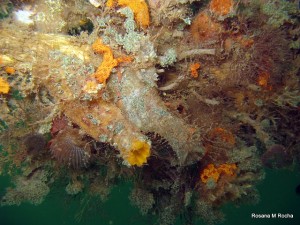by Kristen Minogue
Tunicates. Ascidians. Filter-feeders. Sea grapes. Sea squirts. They go by many names, all describing some of the most colorful invaders in the ocean. A photo gallery from the marine invasions lab offers a glimpse of the most stunning.
Tunicates are immobile invertebrates that survive by filtering water through their bodies. Because they can’t move, most tunicates sit on the seafloor, or on rocks, nets and even living organisms like mussels and oysters. Some live as single flask-shaped zooids less than a centimeter long (solitary tunicates). Others blossom into mat-like colonies of hundreds of zooids, each with its own stomach, heart and other organs, but essentially a single animal (colonial tunicates).
Many are completely harmless. But they can turn into vicious competitors when they invade new territory. Some will kick out native species, and some suffocate the creatures beneath them as they grow and spread. This March SERC’s marine invasions lab launched NEMESIS, an interactive database of more than 500 marine invaders in the U.S. They started the rollout by adding detailed info on tunicates, complete with images and maps of where they’ve been spotted. The slideshow below displays a few of the most eye-catching sea squirts. See the NEMESIS tunicate gallery for a complete listing, and use the interactive map to find the invaders nearest you.



These sea squirts are so cool. I wish we could put them in our salt water tank.